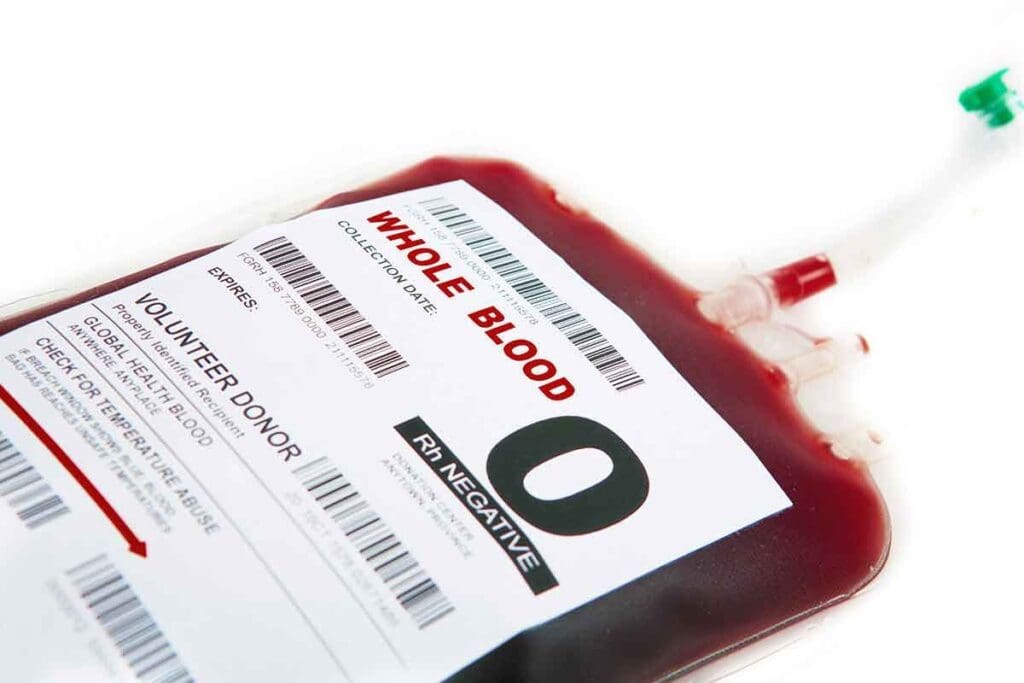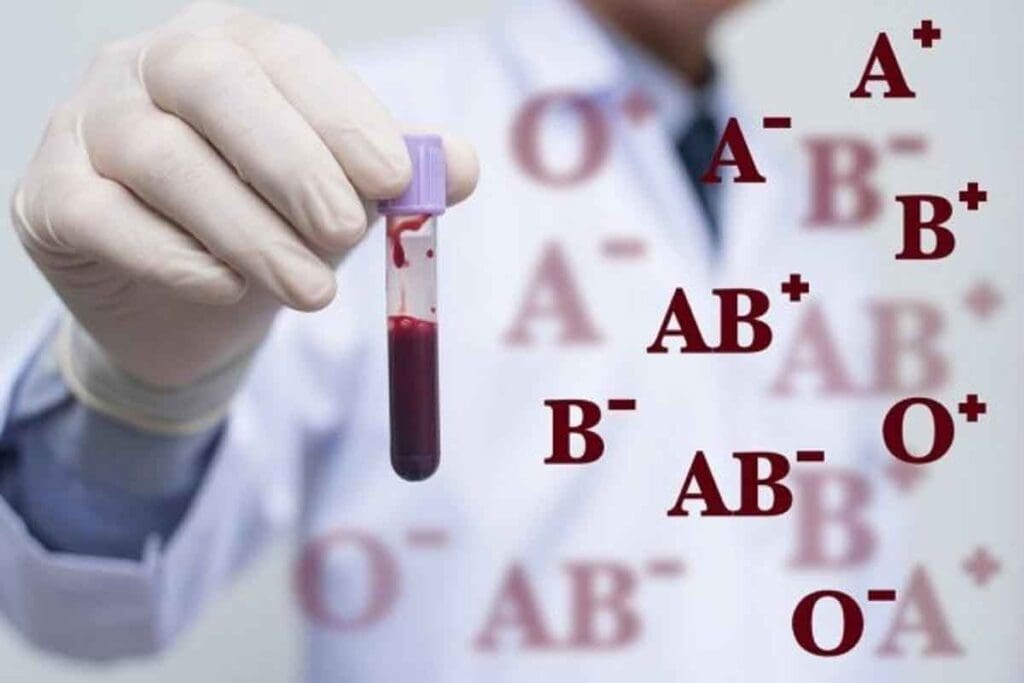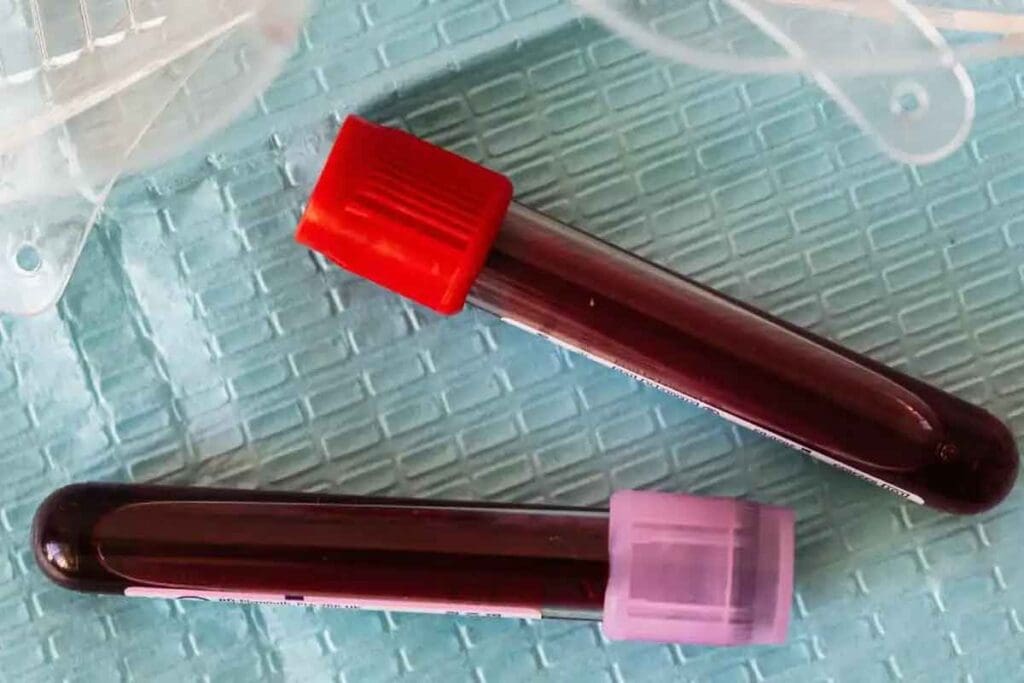Last Updated on November 14, 2025 by Ugurkan Demir

Is O negative blood rare? This is a key question for understanding safe blood transfusions. O-negative blood is special because it can be given to almost anyone, making it a universal donor. In the US, about 6–7% of people have O-negative blood, which makes it relatively rare. In contrast, an even rarer blood type, Rh-null, has only about 50 cases worldwide. Liv Hospital emphasizes the importance of understanding blood type rarity for patient care. This article explores is O negative blood rare and why it matters in medical settings.

The human blood classification system is based on specific antigens on red blood cells. This is key for blood transfusion compatibility.
Blood types are mainly classified into two systems: ABO and Rhesus (Rh).
The ABO system divides blood into four types: A, B, AB, and O. These types show the presence or absence of A and B antigens. Type A has A antigens, type B has B antigens, type AB has both, and type O has none.
The Stanford Blood Center says the ABO system is vital in transfusion medicine. In the US, O positive blood is the most common, followed by A positive.
The Rhesus factor is another important antigen on red blood cells. If present, an individual is Rh positive; if not, they are Rh negative. This is key because RhRh-negativendividuals can react to Rh-positive blood.
“The Rhesus blood type system is the second most important blood group system in human transfusion medicine.”
There are minor blood group systems like Kell, Duffy, and MNS. These are less common in transfusion reactions but can be important in some medical cases.
| Blood Group System | Antigens Involved | Clinical Significance |
| ABO | A, B | High |
| Rhesus | RhD, RhCE | High |
| Kell | K1, K2 | Moderate |
Knowing these blood group systems is vital for safe blood transfusions and managing pregnancy in Rh-negative women.

Recent data from 2025 shows how common O-negative blood is. Medical News Today reports it’s found in about 6.6% of the US population.
O-negative blood is rare but not the rarest. Its frequency changes in different groups. In the US, about 6.6% of people have it.
Key statistics on O-negative blood prevalence include:
O-negative blood is uncommon, found in less than 7% of people. But it’s not as rare as AB negative, found in less than 1%.
The reasons for its relative rarity include genetic factors that influence blood type distribution among populations.
Looking at trends from 2000 to 2025, O-negative blood’s distribution in the US has stayed pretty stable.
| Year | Prevalence of O Negative Blood |
| 2000 | 6.4% |
| 2010 | 6.5% |
| 2025 | 6.6% |
This shows a steady genetic influence on O O-negative blood.
O-negative blood is very valuable because it can be given to anyone. This makes it key for emergency transfusions. The American Red Cross says O-negative blood is vital for emergencies because it works with all blood types.
In urgent situations, O-negative blood is used right away. This is important in trauma cases, surgeries, and for patients whose blood type is unknown. Its flexibility makes it a critical part of emergency care.
But getting enough OO-negativeblood is hard. Hospitals struggle to keep up with the demand, mainly in emergencies or when there’s a lot of trauma. To learn more about blood types and their compatibility, visit the American Red Cross website.
To solve the supply problem, there are special campaigns for O-negative donors. These campaigns are key to keeping a steady supply of this important blood type. Some important facts about O-negative blood donation are:
Understanding the rarity and importance of different blood types, including O negative, shows why diverse blood donations are needed. While O negative is not the rarest, it’s very valuable because it can be given to anyone.
Looking at blood types by rarity in the US gives us important insights. The Stanford Blood Center has data on how common each blood type is. This shows us how to manage blood supplies better.
O positive blood is the most common in the US. About 37-38% of people have this type. Other common types include A positive and B positive.
A positive blood test is found in about 33-35% of the population. B positive is less common, at around 8-9%. Knowing these numbers helps us understand blood availability for transfusions.
Here’s the full list of blood types by rarity:
Knowing this ranking helps us manage blood supplies well. It’s key to ensuring we have enough of the rarest types, like AB negative. It shows why blood donation campaigns are so important.
OO-negativeblood is rare, but there are even rarer types globally. The rarest is Rh-null, with fewer than 50 known cases worldwide, as Medical News Today reports. This blood type is extremely rare because it lacks all Rh antigens on the surface of the red blood cells.
Another rare blood type is AB negative, found in less than 1% of the population. The rarity of these blood types poses significant challenges in transfusion medicine. It can be hard to find compatible blood for patients with these types. Understanding the distribution and characteristics of rare blood types is key to managing their transfusion and medical care.
The rarity of blood types like Rh-null and AAB-negativehighlights the importance of blood donation campaigns targeting individuals with these types. By increasing the availability of rare blood types, we can improve the outcomes for patients requiring these transfusions. The rarest blood type is a significant concern in the medical community, and ongoing research aims to address the challenges associated with these rare blood types.
O positive is the most common blood type. It’s found in about 37-38% of the US population.
O-negative blood is relatively rare. It makes up about 6-7% of the US population. But it’s not the rarest.
The rarest blood type is Rh-null. This is because it lacks all Rh antigens on red blood cells. It’s very rare worldwide.
Rhesus-negative blood is not very common. But its rarity changes in different populations. In the US, it’s found in about 15% of people.
Yes, O positive is very common. It’s the most common blood type. This makes it very important for blood banks because it’s compatible with many people.
The rarest blood types are Rh-null, AB-negative, and B-negative. Their rarity varies worldwide.
Type O blood is not rare. But its Rhesus negative variant (O negative) is less common. It makes up about 6-7% of the US population.
No, O negative is not the rarest. It’s relatively rare but not as rare as Rh-null or AB-negative.
B-negative blood is quite rare. It’s found in about 1-2% of the US population.
No, O positive is not rare at all. It’s the most common blood type.
No, O positive is very common. It’s found in about 37-38% of the US population.
The most common blood types are O positive, A positive, and O negative. Their order varies by population.
AB negative is one of the rarest blood types in the US. It makes up about 0.6-1% of the population.
Subscribe to our e-newsletter to stay informed about the latest innovations in the world of health and exclusive offers!